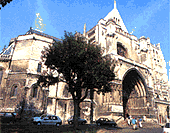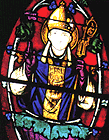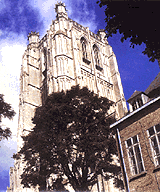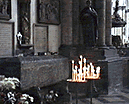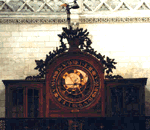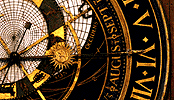Notre-Dame
Cathedral,
St. Omer

|
|
One of France's greatest Gothic
cathedrals Two churches founded by monks Omer later built a chapel and college for monks about 1km further up the gentle slope up from the marshes. This was rebuilt on a grand scale starting in the 13th century as one of the most beautiful Gothic churches in northern France. When completed in 1561, it was made a cathedral to replace the one Charles Quint destroyed in Thérouanne. Saint Erkembode’s tomb Pilgrims Pilgrims came to pray at his grave, and left old shoes as a symbol of their long walk to ask his help - the man who walked so much for other people. |
|
|
Treasures of the cathedral Baroque organ Astrological clock From that period there are many fine decorated tombs. From after the town became French, there is a descent from the cross that might be by Rubens. |
|
|
|
Angels and (top centre) the child Jesus |
|
|
Organ pipes |
||
|
Figures of 'Faith, Hope and Charity' |
||
|
Doors to the choir, guarded by saints |
||
|
|
||
|
Astrological
clock |
|
The clock seemed very special in 16th century. It was a time when Copernicus and Galileo challenged the long-held belief that the Earth was the centre of the universe, and that the sun and stars all revolved round the Earth. This idea dated back to the Greek astronomer Ptolemy. The Church denounced the scientists who questioned this notion, fearing that it cast doubt on their basic teachings about God and creation. |
|
Guided walks round the town |
|
Background
information |
|
|
Try searching the web for: st-omer
cathedral |
|
|
|
|
|
